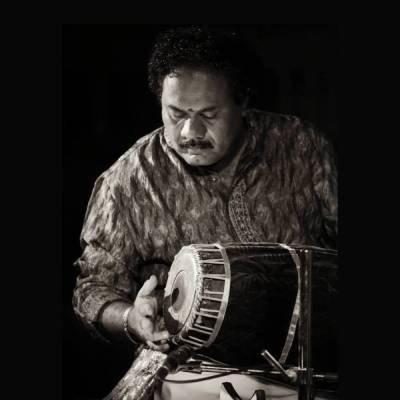The Saxophone is a Brass instrument invented by Adolphe Sax in the early 1840s. It combines the elements of both Brass and Woodwind instruments, featuring a metal body and a single- reed mouthpiece similar to that of a clarinet. Sax designed the instrument to fill a gap in Orchestras and military bands, aiming for a blend of the power of brass and agility of woodwinds. The versatility of the instrument, combined with its accessibility into the world audience, global market and exposure makes people seek out to learn this beautiful instrument in any means of tutelage like- in person classes, institutional learning or online saxophone lessons.
Invented by the Belgian instrument maker Adolphe Sax, the instrument was patented on June 28th 1846, his goal was to combine the power and projection of brass instruments with agility and tonal qualities of woodwinds. The original design included several sizes, including the soprano, alto, tenor, Baritone and Bass saxophone. The instrument was patented as part of Sax’s innovative family of instruments, which also included the saxhorn and saxotromba.
The Saxophone began to gain recognition in France, thanks to Adolphe Sax’s promotion and the instruments adoption by military bands. Despite its considerable popularity amongst people, the instrument did face rejection from classical performers and traditionalists who were skeptical of its place in the orchestra.
Types of Saxophones and notable Makers:
Saxophone come in several types, each suited to a different musical style and purpose.
Soprano Saxophone
- Range– Highest pitch among standard saxophones.
- Description– Straight or curved, it is known for its bright and penetrating sound. Often used in classical music and Jazz music.
- Common uses– Jazz solos, classical pieces
Alto Saxophone
- Range: Higher pitch, Tuned in Eb
- Description– The most saxophone for beginners and professionals alike. It has a warm and versatile sound.
- Common uses– Jazz, rock, Classical and pop music.
Tenor Saxophone
- Range– Lower than alto, tune in Bb
- Description– Known for its rich, robust sound. It is a staple in jazz rock, and big band music.
- Common uses– Jazz, blues and rock
Baritone Saxophone
- Range– Lower pitch, tuned in Bb
- Description– Large and heavier in nature, produces lower deep resonant sound. It is commonly used in jazz ensembles and big bands.
- Common uses– Jazz, classical and marching bands.
Bass Saxophone
- Range– Lower than baritone saxophone, tuned in Bb.
- Description– A rare and large saxophones, it produces an extremely deep and powerful tone.
- Common uses– Jazz, Avant- Garde and experimental music.
Contrabass Saxophone
- Range– Very Low, tuned in Eb.
- Description-is the largest of saxophone. It produces an extremely deep tone.
- Common uses– Avant- Garde and experimental music.
Soprano Saxophone (Curved)
- Description– similar in range to the straight soprano but with a more traditional and curved shape. It has slightly different tonal quality due to shape.
Famous/Notable Saxophone makers:
Selmer (Paris)
- Description-. Renowned for high quality instruments, their saxophones are favoured by many professional musicians. The Seller Mark VI, introduced in 1954 is especially iconic.
Yamaha
- Description-Description- known for producing many reliable and well crafted instruments suitable for all levels. Yamaha saxophones are popular among students and professionals alike.
Keilwerth
- Description-German manufacturer known for their robust, well built saxophones with a distinctive rich sound. The Keilweth SX series is a highly regarded model.
Cannonball
- Description-An American brand known for producing modern high quality saxophones with a bright, contemporary sound. The cannon ball bell stone series is notable.
Jupiter
- Description– Provides a wide range of affordable saxophones for students and intermediate players. Jupiter instruments are known for their durability and value.
Trevor James
- Description– A UK based manufacturer, known for producing saxophones that are well balanced, good quality and at affordable prices, suitable for both students and professionals.
P.Mauriat
- Description– Known for crafting finely tuned instruments with a rich vintage tone, the P.Mauriat saxophones are popular among jazz musicians.
Inference
Each type of saxophone offers unique characteristics, and different makes provide various tonal qualities and build standards, catering to a wide range of musical preferences and needs.
What is the most suitable Saxophone for Western classical music and why?
For western classical music, the alto saxophone is typically considered the most suitable choice.
- Timbre and Range: The alto saxophone has a sound that fits well within the range of many classical compositions. Its tone is clear and versatile, making it suitable for a wide range of classical repertoire.
- Standard Repertoire: A significant portion of the classical saxophone repertoire is written for the alto saxophone. This includes works by composers like Paul Creston, Marcel Mule, and Jean-Michel Damase.
- Ease of Play:
- While all saxophones have their challenges, the alto saxophone is generally considered more manageable in terms of keywork and embouchure compared to the larger tenor or baritone
- Orchestral and Chamber Music: In classical music settings, the alto saxophone often serves as a solo instrument or within chamber groups. It blends well with other classical instruments and can hold its own in orchestral settings when the saxophone is included.
- Historical Context: The alto saxophone has been a staple in classical saxophone studies and performances for many years, making it a traditional choice for classical saxophonists.
If you’re focusing specifically on classical music, the alto saxophone is generally your best bet. However, depending on the specific piece or ensemble, other saxophones like the soprano or tenor might also be used, but they are less common in traditional classical settings.
The introduction of the saxophone into Indian classical and Carnatic music is a relatively recent development, occurring in the latter half of the 20th century. Here’s an overview of how the saxophone found its place in these traditions:
Introduction and Adoption
Early Adaptations
- Fusion and Experimentation: The saxophone was introduced into Indian classical music as part of fusion experiments, blending Western instruments with traditional Indian music. Early adopters were influenced by the growing trend of cross-cultural musical exchanges.
- Influential Musicians: Notable figures such as Kadri Gopalnath, a prominent Carnatic saxophonist, played a crucial role in popularising the instrument within the genre. Kadri Gopalnath, in particular, was instrumental in adapting the saxophone to the Carnatic music context, developing techniques to handle intricate ragas and gamakas ornamentations.
Technical Adaptations
- Tuning and Technique: Musicians had to adapt the saxophone’s technical aspects to fit the microtonal nuances of Indian classical music. This involved modifications in playing techniques and sometimes adjustments to the instrument itself to better match the pitch and tonal requirements of Indian music.
Integration into Repertoire
- Carnatic Music: The saxophone, particularly the soprano and alto varieties, has been incorporated into Carnatic music concerts and recordings. It has been used to perform traditional compositions as well as experimental fusion pieces.
- Hindustani Music: In North Indian classical music, the saxophone has also been integrated into performances, though it is less prevalent compared to Carnatic music. Its use in Hindustani music is often seen in fusion contexts and collaborations.
Challenges and Adaptations
Cultural Integration
- Acceptance: Integrating a Western instrument into a tradition with a rich history and deeply rooted practices presented challenges. However, the saxophone’s ability to mimic the expressive qualities of Indian wind instruments helped in its gradual acceptance.
- Audience Reception: Traditionalists may have been skeptical initially, but the growing popularity of fusion music and innovative performances contributed to broader acceptance.
Technical Considerations
- Gamakas: Indian classical music employs specific ornamentations (gamakas) that required adaptation for the saxophone. Musicians like Kadri Gopalnath developed unique techniques to replicate these intricate nuances on the saxophone.
- Microtones: Indian music often uses microtones, which are not always easily produced on Western instruments. Adaptations were necessary to handle these subtle tonal variations.
Current Status
Fusion and Innovation
- Contemporary Performances: The saxophone continues to be a part of experimental and fusion performances in both Carnatic and Hindustani music, often collaborating with traditional instruments and other Western instruments.
- Educational Contributions: The introduction of the saxophone has also influenced music education, with institutions and music schools incorporating it into their curricula for students interested in fusion and contemporary classical music.
Growing Popularity
- Recognition: The saxophone’s role in Indian classical music is increasingly recognised, with more musicians exploring its possibilities and contributing to its integration into traditional and contemporary performances.
This growth and recognition of the instrument has made it popular and desirable to be learned. Online Carnatic saxophone classes and numerous guru working towards propagating the instrument and skill to newer generations have made significant strides in establishing the instrument.
Overall, while the saxophone’s entry into Indian classical and Carnatic music is a modern development, its adaptability and the innovative approaches of musicians have established its presence in these rich musical traditions.
What is the most suitable Saxophone for Indian classical music (Carnatic music) and why?
In Carnatic music, which is a classical music tradition from South India, the most suitable saxophone is typically the soprano saxophone.
- Timbre and Range: The soprano saxophone has a bright and clear tone that blends well with the melodic and rhythmic aspects of Carnatic music. Its higher pitch and sharp sound can complement the intricate and expressive nature of Carnatic compositions.
- Melodic Lines: Carnatic music often emphasises intricate melodic lines and ornamentation (such as gamakas). The soprano saxophone’s agility allows it to execute these nuances effectively, making it suitable for the melodic improvisations and complex ragas used in Carnatic music.
- Cultural Adaptation: While the saxophone is not a traditional Carnatic instrument, it has been adapted into the genre by contemporary musicians. The soprano saxophone, in particular, has found a place in fusion performances and experiments within Carnatic music due to its ability to approximate the tonal qualities of traditional Indian wind instruments.
- Portability: The soprano saxophone is relatively more portable compared to the larger tenor or baritone saxophones, making it easier to handle in various performance settings, which is advantageous in live Carnatic performances that often involve a lot of movement and interaction.
While the soprano saxophone is generally favoured, some musicians might also experiment with the alto saxophone for its slightly warmer tone. However, the soprano saxophone’s ability to closely match the tonal characteristics of traditional Indian instruments and its flexibility in performance contexts make it a popular choice in Carnatic music.
Indian Saxophone artists who have made a mark in the industry
Several Indian artists have made significant contributions to the saxophone, particularly in the context of Indian classical music and fusion genres. Here are some notable saxophonists:
1. Kadri Gopalnath
- Background: Kadri Gopalnath is perhaps the most renowned Indian saxophonist, especially known for his work in Carnatic music. He began his career with the alto saxophone and later became famous for adapting this Western instrument to the intricate ragas and gamakas of Carnatic music.
- Achievements: He has performed extensively across India and internationally, bringing the saxophone into mainstream Carnatic concerts. His innovative approach has significantly influenced how the saxophone is used in Indian classical music.
2. Manohari Sing
- Background: Manohari Sing born in a Nepalese family in Kolkata, started playing the saxophone, in the bata shoe company Brass He also played the piccolo and flute in Calcutta Symphony Orchestra. His strength in playing the instrument reflected around nuanced techniques and soul stirring melodies across genres.
- Achievements:
- He was awarded the memorable contributing to music award in Radio Mirchi Music award held on March 27th 2009.
3. Suba Lakshmi
- Background: She began training in Carnatic vocals at the age of five, having been born into a family of musicians. Her grandfather, MR Rajappa was an Asthana Vidwan in the royal court of Mysuru. She began her tutelage under reputed Guru Shri Kadri Gopalnath.
- She experiments incorporating Saxophone in different genres like Carnatic western and fusion
- Awards: Saxophone Subalakshmi holds a Guinness world record for the longest marathon of playing saxophone, which is 26 hours and 23 min.
Interactional saxophone artists notable for making a mark in the industry
Numerous international artists are renowned for their exceptional skill on the saxophone, spanning various genres such as jazz, classical, and fusion. Here are some of the most influential and famous saxophonists:
– Jazz Saxophonists
John Coltrane
- Background: An iconic figure in jazz, Coltrane was known for his powerful, innovative playing and complex harmonic explorations. His work in the 1950s and 1960s, including albums like Giant Steps and A Love Supreme, remains highly influential.
- Impact: Coltrane revolutionized jazz with his approach to improvisation and his contributions to modal jazz and avant-garde jazz.
Charlie Parker
- Background: A leading figure in the bebop movement, Parker, also known as “Bird,” was renowned for his fast, virtuosic playing and complex improvisational skills.
- Impact: Parker’s work, including pieces like Ornithology and Ko-Ko, set new standards for jazz improvisation and composition.
Sonny Rollins
- Background: Known for his robust sound and innovative improvisation, Rollins has been a major figure in jazz for decades. His classic albums include Saxophone Colossus and The Bridge.
- Impact: Rollins is celebrated for his improvisational prowess and his contributions to the development of modern jazz.
Lester Young
- Background: A key figure in the swing era, Young was known for his smooth, relaxed playing style. His collaborations with the Count Basie Orchestra and recordings like Lester Leaps In are highly regarded.
- Impact: Young’s playing style and approach to improvisation influenced many later jazz saxophonists.
Cannonball Adderley
- Background: Adderley was known for his energetic, soulful playing and contributions to hard bop. His notable works include Somethin’ Else and Mercy, Mercy, Mercy.
- Impact: Adderley’s style and sound significantly influenced the development of hard bop and soul jazz.
– Classical Saxophonists
Marcel Mule
- Background: Often considered the father of the French saxophone school, Mule was a pioneering classical saxophonist who helped establish the saxophone as a legitimate classical instrument.
- Impact: Mule’s pedagogical work and performances significantly advanced the classical repertoire for the saxophone.
Claude Delangle
- Background: A leading contemporary classical saxophonist from France, Delangle is known for his technical mastery and contributions to expanding the saxophone repertoire.
- Impact: Delangle’s recordings and performances have greatly influenced modern classical saxophone playing.
Jean-Michel Damase
- Background: A French saxophonist and composer known for his contributions to the classical saxophone repertoire. His works often explore the saxophone’s expressive capabilities.
- Impact: Damase’s compositions and performances have been influential in expanding the saxophone’s role in classical music.
– Fusion and Contemporary Saxophonists
Kenny G
- Background: Known for his smooth jazz style, Kenny G is one of the best-selling instrumental musicians in history. His albums, such as Breathless, have achieved widespread commercial success.
- Impact: Kenny G’s smooth jazz style has made the saxophone popular in mainstream and smooth jazz circles.
David Sanborn
- Background: A prominent figure in contemporary jazz, Sanborn is known for his distinctive sound and influential recordings. His albums include Voyeur and Straight to the Heart.
- Impact: Sanborn’s style blends jazz, R&B, and funk, and he has been a significant influence on contemporary saxophone playing.
These artists represent a broad spectrum of saxophone playing, from jazz to classical and contemporary styles, each contributing uniquely to the instrument’s legacy and evolution.
Conclusion:
The saxophone is a dynamic and adaptable instrument with a significant presence in both Western and Carnatic music. Its different types offer a wide range of tonal possibilities, making it suitable for various musical styles. In Western music, it plays a crucial role in jazz, classical, and popular genres, while in Carnatic music, it represents a modern integration of Western instruments into traditional Indian frameworks. Its continued evolution and adaptability highlight the saxophone’s unique position as a bridge between diverse musical traditions.
If you are someone who aspires to learn this beautiful instrument- to learn saxophone online or under the tutelage of a reputed teacher, now is the time to pick it up and begin your journey.


















